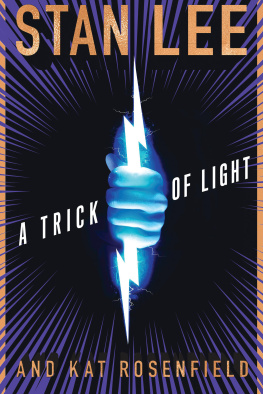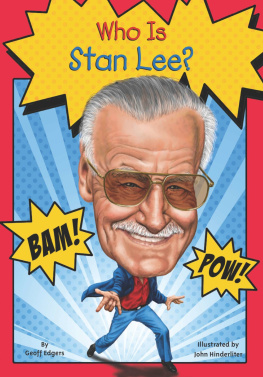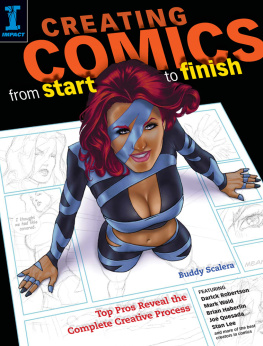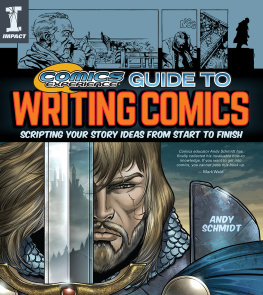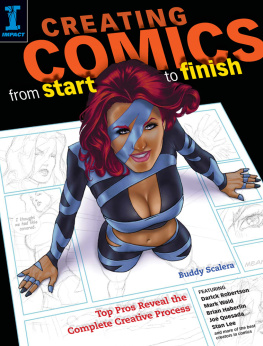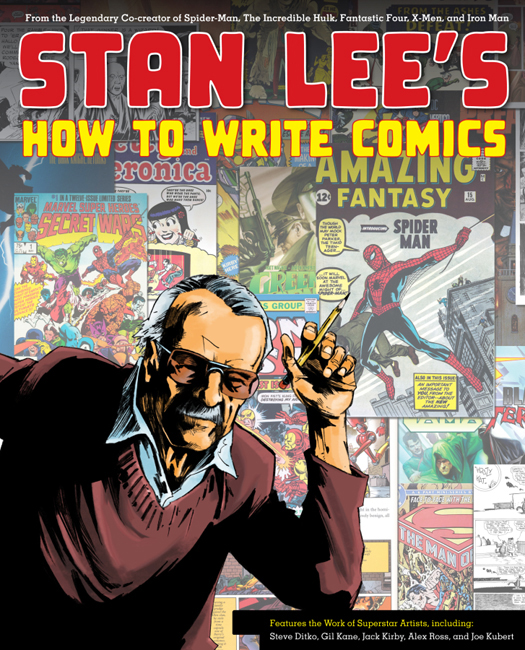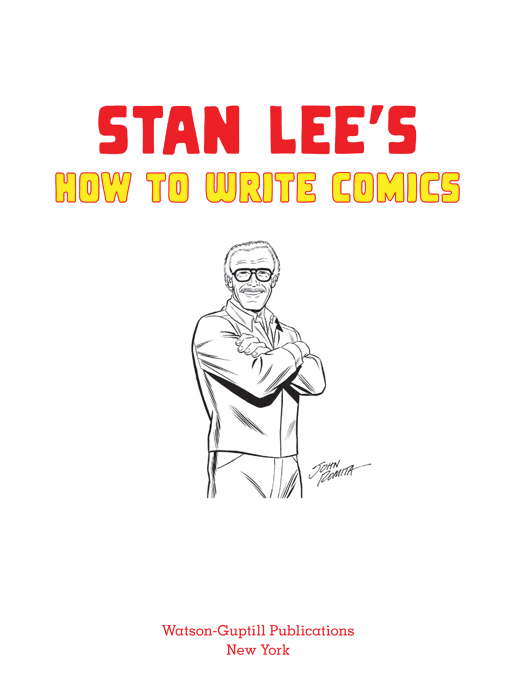Cowriter: Bob Greenberger
Contributing artists: Neal Adams, Ross Andru, Erica Awano, Mark Bagley, Diego Bernard, John Byrne, Aaron Campbell, J. Scott Campbell, Chris Caniano, Milton Caniff, John Cassaday, Cliff Chiang, Gene Colan, Steve Dillon, Steve Ditko, Glenn Fabry, Francesco Francavilla, Frank Frazetta, Frank Kelly Freas, Dick Giordano, George Herriman, Bill Hughes, Bryan Hitch, Dan Jurgens, Gil Kane, Jack Kirby, David Lafuente, Jonathan Lau, Bob Layton Sr., Larry Lieber, Mike Mayhew, Bob McLeod, Frank Miller, Tom Morgan, Katsuhiro Otomo, Richard F. Outcault, Carlos Paul, Frank Paul, George Prez, Wendy Pini, Joe Quesada, Frank Quitely, Carlos Rafael, Caesar Razek, Wagner Reis, Paul Renaud, John Romita, John Romita Jr., Alex Ross, Mel Rubi, Edgar Salazar, Manuel Clemente Sanjulian, Mike Sekowsky, Joe Shuster, Bill Sienkiewicz, Dave Sim, Vin Sullivan, Rodolphe Tpffer, Michael Turner, Mike Zeck
Copyright 2011 by Dynamite Entertainment
All rights reserved.
Published in the United States by Watson-Guptill Publications,
an imprint of the Crown Publishing Group,
a division of Random House, Inc., New York.
www.crownpublishing.com
www.watsonguptill.com
WATSON-GUPTILL is a registered trademark and the WG and
Horse designs are trademarks of Random House, Inc.
Produced in association with Dynamite Entertainment

www.dynamite.net
Library of Congress Cataloging-in-Publication Data
Lee, Stan, 1922
Stan Lees how to write comics / by Stan Lee. 1st ed.
p. cm.
Includes bibliographical references and index.
1. Comic books, strips, etc. Authorship. I. Title. II. Title: How to
write comics
PN6710.L44 2010
808.066741dc22
2010045663
eISBN: 978-0-8230-0086-9
Cover design by Jess Morphew
Front cover art by Jonathan Lau
Special thanks to POW! Entertainment, Inc., Gil Champion, Michael Kelleher, Arthur Lieberman, Luke Lieberman, Mike Kelly, Heritage Auctions, Michael Lovitz, Digikore, Carol Punkus, Dave Altoff, Mike Raicht, Eli Bard, Gregory Pan, Nick Barrucci, Juan Collado, Josh Johnson, and Josh Green.
Stan Lee, Excelsior, Stan Lee Presents
and 2011 Stan Lee and POW! Entertainment, Inc.
How to Draw Comics the Marvel Way 1979 Stan Lee & John Buscema
Silver Surfer Graphic Novel 2011 Stan Lee & Jack Kirby
Sherlock Holmes & Complete Alice in Wonderland & 2011 Savage Tales Entertainment, LLC
Archie & 2011 Archie Comics Publications, Inc.
The Haunt of Fear 2011 William Gaines, Inc.
Cerebus 2011 Aardvark-Vanaheim, Inc.
Elfquest & 2011 Warp Graphics, Inc.
Green Hornet & 2011 Green Hornet, Inc.
Akira 2011 Kodansha
Terry and the Pirates 2011 Tribune Media, Inc.
Flash Gordon & 2011 King Features Syndicate, Inc.
A Contract with God & 2011 Will Eisner Studios, Inc.
Sin City & 2011 Frank Miller, Inc.
Black Terror, Death Defying Devil, Green Lama & Project Superpowers & 2011 Super Power Heroes, LLC
Zorro & 2011 Zorro Productions, Inc.
Red Sonja & 2011 Red Sonja, LLC
Buck Rogers 2011 Dille Family Trust
Vampirella & 2011 DFI
Dynamite Entertainment 2011 DFI. All Rights Reserved.
Marvel, and all related character names and their distinctive likenesses:
& 2011 Marvel Entertainment, LLC and its subsidiaries All rights reserved.
Images and likenesses of DC Comics characters & 2011 DC Comics.
v3.1

ACKNOWLEDGMENTS
Stan wishes to thank the following creators for contributing their opinions and advice, making this a far better book than it would have been otherwise: Roy Thomas, Brian Bendis, Mark Waid, Jerry Ordway, Kurt Busiek, Gene Colan, Richard Starkings, Tom Orzechowski, Ken Bruzenak, Richard Pini, Marv Wolfman, John Romita, Chris Ryall, Andy Schmidt, Shawna Gore, and Chuck Dixon.
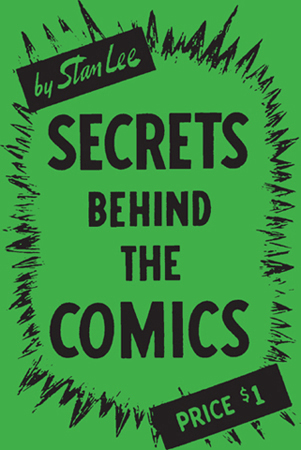
Stan Lees original how-to book from the 1940s.
ORIGINS
THE TOOLS
THE BASICS
GENRES
A FULL SCRIPT VS. MARVEL STYLE (PLOT-FIRST)
CREATING THE CHARACTER
STORYTELLING
SUBPLOTS
FORMATS
PREPARING THE SCRIPT, AND YOURSELF
CONTINUITY
THE FINISHED SCRIPT
WHAT EDITORS WANT
PROFESSIONALISM
PREFACE
Hi, Comic Book Writers!
Interviewers often ask me to describe those exciting days at Marvel in the early 60s when we were creating a brand-new universe of superheroes. Its hard to put into words the fun and excitement of bringing new types of characters and stories onto the printed page. And its almost impossible to give enough credit to the enormously talented artists I worked with, artists who took our stories and depicted them so thrillingly, so dramatically that every tale was like watching a fantastic movie on the pages of each amazing comic book.
But every strip begins with one thingthe story! And thats what were gonna be talking about on the pandemonious pages that follow!
Ever since Marvels superheroes conquered the world, or at least it feels that way, people have wanted to learn the magic; much as Stephen Strange sought the Ancient One to learn how to cast spells and help mankind, men and women of all ages have sought to learn how to string the words together to tell stories in comic book form.
Of course, creatively, comic books are a literary world of their own. Unlike movies, television, or video games, theyre unique in the way they blend words and art on the printed page to tell titanic tales designed to open new vistas of imagination and excitement for the lucky reader.
Writers who come from other disciplines soon discover just how challenging comics can be. In the past, some have asked me for tips, but theres no way I could ever tell them all they had to know in a brief conversation. However, thanks to this book, which youre so happily holding in your grateful hands, all of that has changed.
What follows are the rules, the hints, and the tips as I have come to know them. But teamwork is as important in comics as it is in sports and life itself. To make certain that theres nothing Ive neglected, to ensure that Ive covered all the literary bases, Ive been lucky enough to be able to recruit Bob Greenberger and the hip horde of heroes at Dynamite Entertainment to help me put together a lifetimes worth of comic bookwriting experience into this valiant volume of indispensable info.
Obviously, styles and methods have changed over the years just as typewriters have given way to computers. So, what youre about to read is an amalgamation of the current collective wisdom on how to write comics today.
But what has not changed, nor will it ever, is the desire to tell a story and tell it well. In each case, you want to write something new, something thats never been written before. You want to explore situations no one has read beforeand you have that in common with your readers. Every day, as fans walk into their comic shops or bookstores seeking the latest comic books, they have one thing in mind. They want to be transported into adventures and situations theyve never encountered before. They want to be entertained, thrilled, and surprised.



